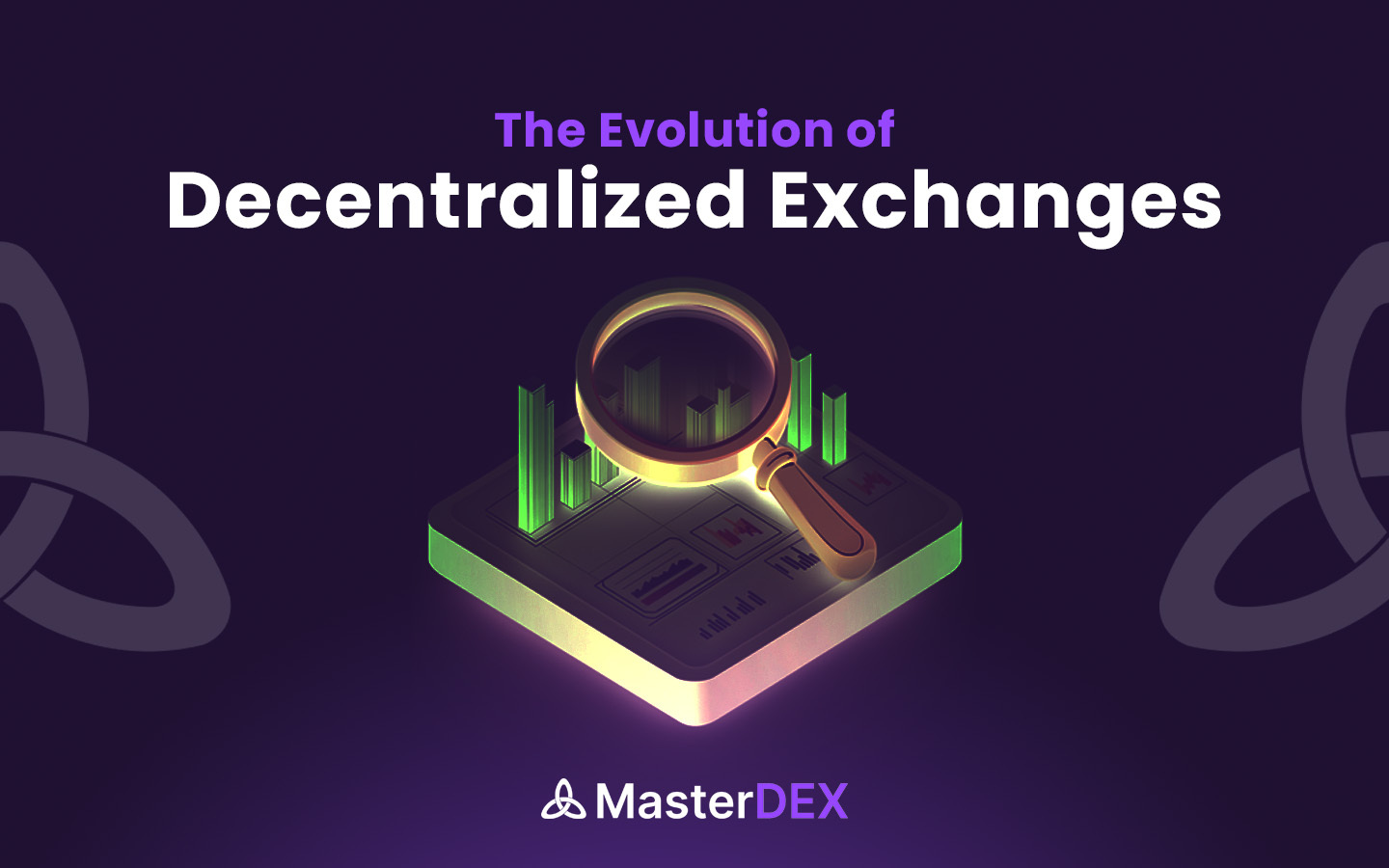Are you curious to learn how decentralized exchanges came into existence? Whether you’re a newbie or a seasoned trader, we have got you covered. Let’s delve deeper and understand what DEX is, how it all started, how it has transformed, and what its future looks like. So, let’s get started!
What is DEX?
Decentralised exchanges, or DEXs, offer transparent trading terms to investors and traders. Unlike centralised exchanges that involve banks, brokers, or other intermediaries, DEX allows its users to swap coins with other traders without involving any third-party intermediary, along with seamless settlement and without paying any considerable transaction costs.
The Early Days of DEXs: Order Book Model
The concept of DEXs came into existence in 2016 with the introduction of the first DEXs, like EtherDelta and ForkDelta, which were revolutionary in their own way. They eradicated the issues that were persistent with centralised exchanges, like intermediaries involvement, hidden costs, and susceptibilities to hacking and mandatory KYC verifications.
Primitive DEXs were based on order-matching, where buyers and sellers placed orders in a centralised order book managed by smart contracts. These systems required crypto traders to manually post buy and sell orders for a specific trading pair and find counterparties, which resulted in inefficiencies and longer wait times.
Another issue linked with initial-stage DEXs was in terms of cost, which was due to Ethereum’s scaling challenges. Since all order matching logic and trade settlement occurred on-chain, during high volume, transaction fees would surge, and trades could take a longer processing time.
Last but not least, there were no standard mechanisms for the community to vote on proposals or have a say in decision-making. In other words, the governance model was missing.
Despite their underlying challenges, these order-matching models offered the first glimpse into decentralised trading, leading to the foundation for smart innovations like automated market makers, AMMs in short.
The Advent of AMMs: The Backbone of Modern DEXs
With continued success and innovation, DEX incorporated the concept of the AMM model. Uniswap, in 2018, was the first decentralised platform that changed the way people think about peer-to-peer crypto trading by introducing the concept of decentralised liquidity pools and pricing curves. Unlike order book-based exchanges, automated market makers provide liquidity through smart contracts that set prices algorithmically on the basis of the ratio of tokens in the liquidity pool.
This new model revolutionised how decentralised exchanges work, making the whole trading process decentralised yet permissionless. With AMMs, anyone could provide liquidity to a pool and earn decent fees without any intermediaries.
Due to AMMs’ benefits that serve in the crypto space, at present, most of the DEXs, for instance, Pancake DEX, SushiSwap, Balancer, and many more, have their own AMMs now.
Multi-Chain DEX: A Groundbreaking Innovation
Multi-chain DEXs, which appeared in 2022, have transformed the DeFi landscape by enabling traders and investors to trade digital assets across different blockchain networks. Such a strategy not only improves user experience but also offers tremendous trading opportunities, improves liquidity, and helps foster innovation within the DeFi space. 1inch, Thorchain, Balancer, UniDex, and LI.FI are some of the popular multi-chain decentralised exchanges.
Ethereum’s contributions in the DEX space are unparalleled, making it the backbone of this innovation. However, as the DeFi space grows, multi-chain and cross-chain solutions are maturing to complement and boost Ethereum’s foundational role.
Bottom Line: The Future is Decentralised
From their inception as a novel idea to becoming a cornerstone of DeFi, decentralised exchanges have come a long way. In its early stages, hooked with low liquidity and complex interfaces, DEXs have undergone remarkable evolution by eradicating and improvising every pain point and bringing mature, user-friendly platforms powered by AMMs and multi-chain functionality. The journey of DEX showcases the ability of technology to disrupt traditional financial systems and create more inclusive ecosystems for all.
If the concept of decentralisation excites you, we have MasterDEX, a pioneering platform, precisely intended to revolutionise the way users interact with digital currencies and tokens and aims to aggregate liquidity from several DEXs and provide its users with the best price across multiple exchanges.
If this excites you, learn more about MasterDEX here!



